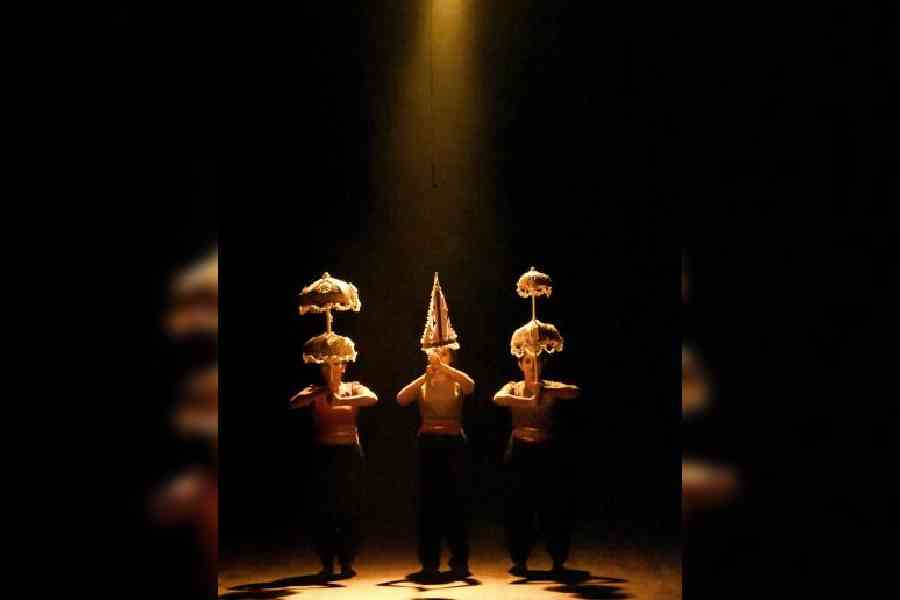During a visit to the Book Fair in Calcutta in 1996, Sohini Chakraborty came across a poster that featured a woman’s face and read: “They sell me my own blood… I am no more a bride-to-be, a mother-to-be, a future-to-be.”
The poster had been put up by the anti-trafficking organisation from the city, Sanlaap. The image and the text got burnt into Chakraborty’s brain.
Chakraborty was a post-graduate student of sociology at Calcutta University then and an accomplished dancer. She had trained under Bharatnatyam guru Khagendra Nath Barman and was a member of Manjusri Chaki-Sircar’s Dancers’ Guild and Usha Ganguly’s theatre group.
At the fair, she promised herself that she would try to do something. That is how the idea of Kolkata Sanved, a group that promotes the dance-therapy movement, was born.
On April 27 and 28, it celebrated its 20th anniversary, with its members and friends attending from many parts of the country and the world.
It has not been an easy journey. Dance itself is not easy, especially in a culture that inhibits the body. Not everyone can dance, because it may require a permission.
It is important to see where and how dance is being performed. It can be a high classical art form, bound by rules, a fun thing at weddings and parties, or an essential element in our films, but these are all being acted out in socially permitted spaces and ways.
“Dance can also be elitist or an entertainment,” said Chakraborty.
Dance as therapy seeks to allow the dancer to use the movement of her body the way she wants to.
This is not easy either, because it has to counter the inhibition of the body and also enable the use of a body that has perhaps suffered violence, trauma or sexual exploitation.
Chakraborty had started her work with the survivors of trafficking at Sanlaap.
It is the body, primarily, that experiences violence and trauma. Especially the female body. Yet when that body finds its flow and moves the way it wants to, a sense of agency is restored to it.
“It is liberating,” said Chakraborty.
“It is something creative and allows you control over yourself.”
Kolkata Sanved, registered as an NGO in 2004, has always worked with marginalised persons, including children, from the grassroots level and underprivileged sections, though it is open to participation for all.
It has created a culturally contextualised approach to dance movement therapy: “Sampoornata” (wholeness or a feeling of fulfilment), which goes beyond the clinical and focuses on holistic well-being, including the physical, emotional, mental, spiritual and social. It aims at the psychosocial rehabilitation of survivors of violence and the prevention of violence.
Kolkata Sanved has made its participants its partners. While Chakraborty is the founder/director, four survivors are founder-members of the organisation who are in leadership roles. One survivor is part of the board.
The organisation conducts several programmes for individuals and groups and holds workshops.
Based in Calcutta, it now has a presence in seven states in India. It conducts a post-graduate diploma programme in dance movement therapy with the Tata Institute of Social Sciences (TISS), Mumbai.
In the last two decades, Kolkata Sanved has witnessed the transformations of many lives.
On April 27, Kolkata Sanved’s whole-day programme at the ICCR was like a mini carnival.
April 28 saw two performances: Yatra by Kolkata Sanved and Tanashah by Navtej Singh Johar. The latter was a timely reminder of Bhagat Singh’s politics and atheism and Yatra was a colourful, robust performance by the members of Kolkata Sanved. The joy and abandon with which it was performed made the dancers’ enjoyment obvious.
Choreographers Urmimala Sarkar Munsi and Vikram Iyengar pointed out how the dancers had taken the lead in shaping the performance.










